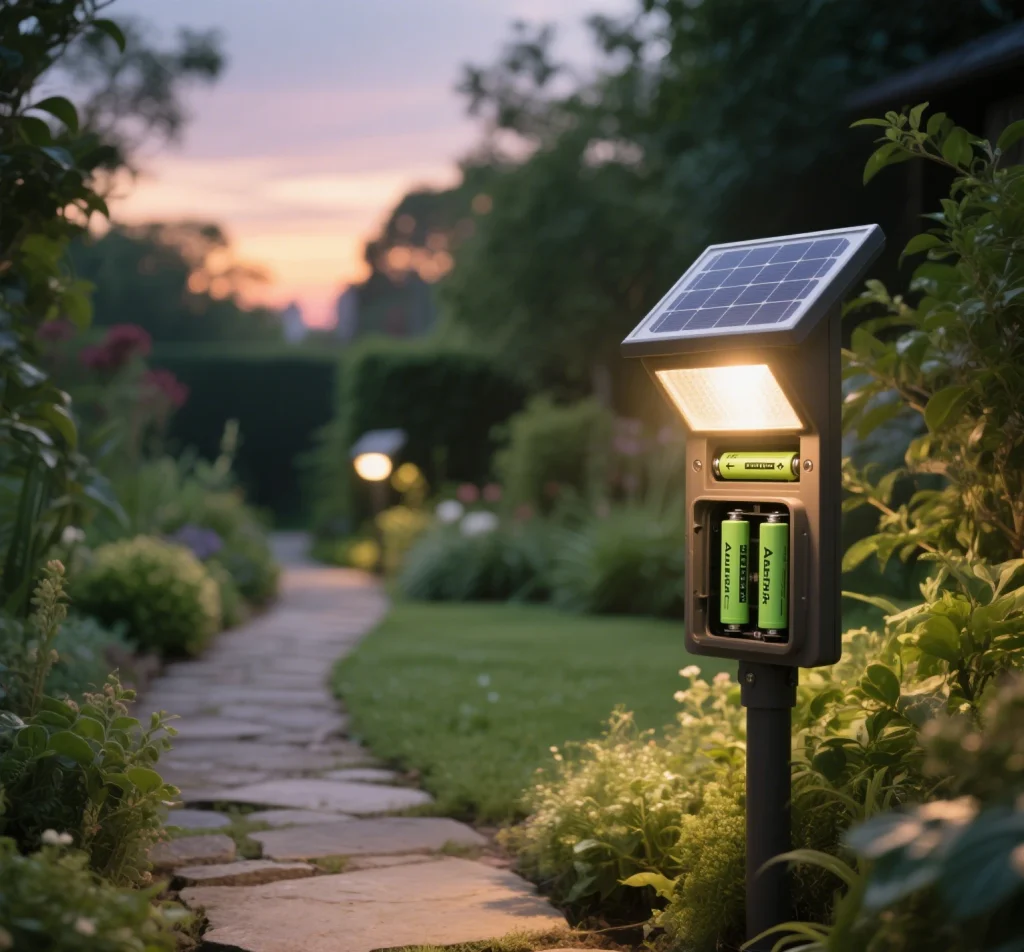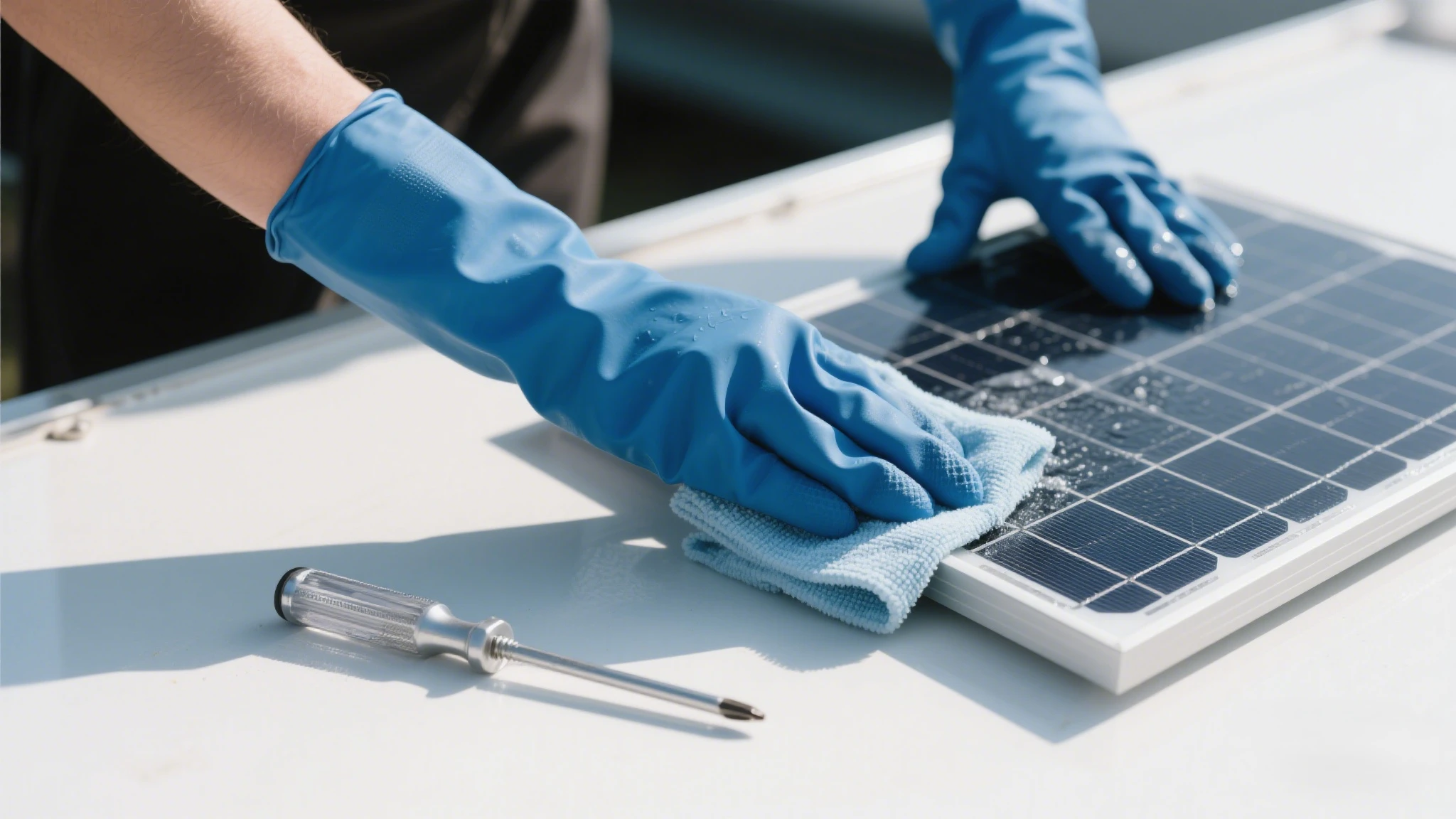Solar path lights are eco-friendly and energy-efficient lighting solutions widely used in outdoor settings such as roads, gardens, and parks. The battery, as a core component of the solar path light system, stores the electricity converted from solar energy, and its performance directly impacts the system’s efficiency and lifespan. Proper battery maintenance not only extends the lifespan of solar path light batteries but also ensures long-term stable operation. Below are practical tips on how to maintain solar path light batteries to help users better care for their equipment.

Battery Cleaning and Visual Inspection
Keeping the battery clean is the foundation of maintenance. Regularly inspect the solar battery casing and remove dust, dirt, or corrosive substances from its surface. Use a damp soft cloth for gentle wiping and avoid corrosive chemical solvents to prevent damage to the casing. Additionally, check for physical damage such as dents, swelling, or cracks, as these may indicate potential battery failure. If abnormalities are detected, contact a professional for inspection and handling.
Cleaning frequency depends on the installation environment. In dusty or heavily polluted areas, monthly cleaning is recommended; in cleaner environments, quarterly cleaning suffices. Regular cleaning and inspection can effectively prevent battery issues caused by external factors.
Battery Connection Inspection and Maintenance
The stability of battery connections is critical to the operation of solar path light systems. Inspect the connection screws between batteries every six months to ensure they are not loose or oxidized. Loose connections can lead to poor contact, reducing energy transmission efficiency and potentially causing system failures. During maintenance, always use tools with insulated handles to prevent accidental short circuits and ensure safety.
Additionally, check the condition of wiring terminals regularly, removing any oxidation or dirt to ensure smooth current transmission. For solar path lights in long-term operation, maintaining connection components is especially important to minimize performance loss due to contact issues.
Charge and Discharge Management: Protecting Battery Performance
Proper charge and discharge management is key to extending solar path light battery lifespan. Overcharging and over-discharging are common causes of battery damage. Overcharging can raise battery temperature, leading to thermal runaway and reduced lifespan, while over-discharging may cause deep discharge, damaging the battery’s internal structure. To avoid these issues, ensure the solar path light is equipped with a high-quality charge-discharge controller to automatically regulate charging.
Equalizing charging is another critical maintenance measure. Perform equalizing charging 2-3 times per quarter to restore voltage consistency among battery cells, especially during seasonal transitions. During prolonged cloudy or rainy weather, the solar battery may not charge sufficiently due to limited sunlight. In such cases, reduce the operating time of the light to prevent excessive discharge. Scientific charge and discharge management can significantly enhance battery performance.

Temperature Control: Ensuring Optimal Battery Environment
Temperature is a significant factor affecting solar battery performance. The ideal operating temperature range for batteries is 5°C to 25°C. Excessively high or low temperatures can accelerate battery aging and reduce storage capacity. In winter, install insulation to protect the battery from freezing; in summer, ensure proper ventilation in the battery storage area to avoid overheating.
For solar path lights installed in extreme climates, select battery models designed for high or low temperatures and incorporate additional temperature protection measures during design. For example, add cooling devices in desert regions or use insulated enclosures in cold climates. These measures effectively protect the battery and extend its lifespan.
Seasonal Maintenance and Long-Term Storage
Seasonal maintenance is particularly important for solar path light batteries. In spring and autumn, conduct comprehensive checks on the battery’s charge-discharge status and connections to ensure the system operates normally amid changing light conditions. For batteries not used for extended periods, such as during winter downtime, perform supplemental charging before reuse to ensure the battery is fully charged.
For long-term storage, keep batteries in a dry, cool environment and perform supplemental charging every three months to prevent damage from self-discharge. Proper seasonal maintenance significantly enhances the reliability and durability of solar path light systems.
Fault Prevention and Regular Monitoring
Prevention is better than repair, and regular monitoring of battery performance is an effective way to avoid issues. Users can track battery voltage, current, and temperature to identify potential problems early. For instance, abnormal voltage may indicate battery aging, while high temperatures could suggest charging system issues. Some advanced solar path lights come with smart monitoring systems that provide real-time battery status updates, facilitating maintenance.
If significant performance decline or faults are detected, contact a professional service provider for inspection and repair. Avoid disassembling the battery yourself to prevent safety hazards. Brands like Bitpott often provide professional after-sales support, and users can refer to product manuals to contact relevant service teams.
Choosing Quality Batteries and Professional Maintenance
While scientific maintenance methods can significantly extend solar path light battery lifespan, the quality of the battery itself is equally important. High-quality batteries excel in durability, storage capacity, and resistance to extreme environments. For example, Bitpott’s solar path lights use high-performance lithium batteries that operate reliably in various climates. Selecting a reputable battery brand combined.c with proper maintenance is key to ensuring long-term efficient operation of solar path lights.
For complex or professional maintenance needs, entrust the task to professional teams. They can provide accurate fault diagnosis and tailor maintenance plans based on the equipment’s operating environment, further improving system stability and lifespan.
Conclusion
Battery maintenance for solar path lights is essential for ensuring efficient system operation and extending lifespan. Through regular cleaning, connection checks, proper charge-discharge management, temperature control, seasonal maintenance, and fault monitoring, users can significantly improve battery performance and reduce failures. Choosing high-quality solar batteries and leveraging professional maintenance services ensures stable operation in various environments, providing reliable support for outdoor lighting. Whether for gardens, roads, or parks, proper battery maintenance delivers longer usability and higher returns on investment.


Leave a Reply